
Transit Briefs: CTA, MARTA, Phoenix Valley Metro, SacRT, Tri-Rail, TTC
Written by Marybeth Luczak, Executive Editor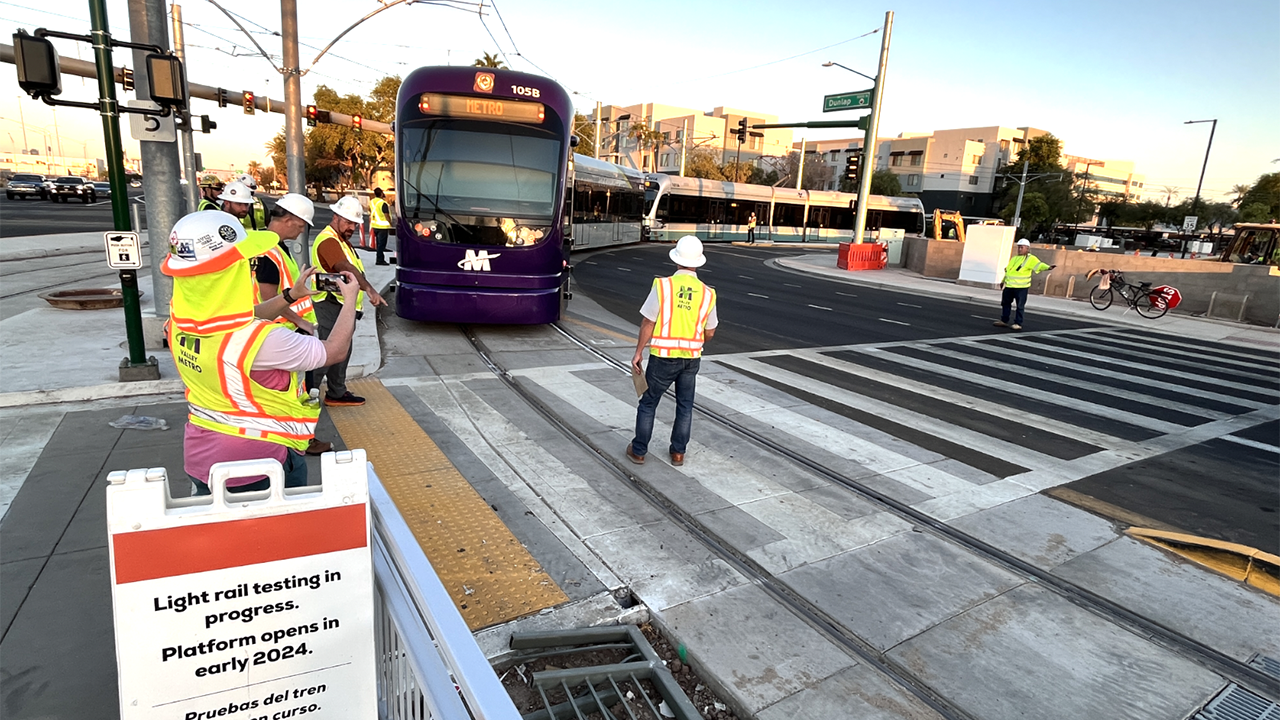
With service expected to launch early next year, Phoenix Valley Metro’s 1.6-mile Northwest Extension Phase II project is now in the testing phase. (Phoenix Valley Metro Photograph)
Chicago Transit Authority (CTA) is developing a chatbot for customer assistance on its website. Also, Metropolitan Atlanta Rapid Transit Authority (MARTA) advances its Five Points Station Transformation Project; Phoenix Valley Metro readies for the Northwest Extension Phase II project’s 2024 launch; the first of Sacramento (Calif.) Regional Transit District’s (SacRT) new Siemens Mobility SD700s enter the final testing phase; Tri-Rail’s commuter rail ridership recovery continues in Florida; and Toronto Transit Commission (TTC) awards a radio communications coverage contract for a subway system pilot project.
CTA
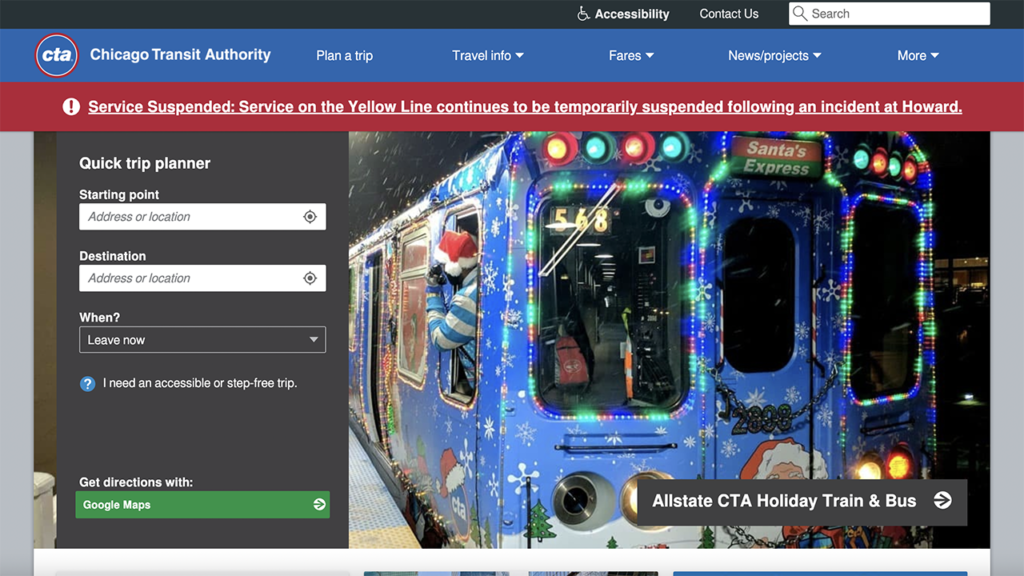
CTA has teamed with Google Public Sector to develop the “Chat with CTA chatbot” feature for its website. Described as a “virtual assistant,” the tool will make it easier for riders to report issues and provide feedback and to receive answers to basic travel questions, according to the transit agency. The tool will not support emergencies or urgent matters that require immediate attention.
As 36% of people in CTA’s service area speak a non-English language at home, the Chat with CTA chatbot will support Spanish, Polish, Simplified Chinese, and Filipino/Tagalog in addition to English.
According to CTA, the Chat with CTA chatbot is the agency’s first step toward “modernized, enhanced and expanded customer support” and is expected to launch in early 2024. The opportunity to create it builds on Google Public Sector’s previous partnership with the Illinois Department of Employment Security.
“AI is fundamentally changing how many government agencies operate, fueling a new era of cloud that can benefit virtually every area of an organization,” said Brent Mitchell, Vice President, US State & Local Government and Education at Google Public Sector. “By utilizing Google Cloud’s leading AI capabilities to power Chat with CTA, the Chicago Transit Authority can improve operations while providing a better overall customer experience.”
“We are committed to continuing to find new, convenient ways for our customers to contact us, and using more modern technology can help improve the CTA travel experience,” CTA President Dorval R. Carter Jr. said. “We’re happy to be partnering with Google Public Sector to help deliver the Chat with CTA chatbot on our website, providing our customers with a next-generation communication tool that will make it easier to ask questions and get the information they need in real time.”
MARTA
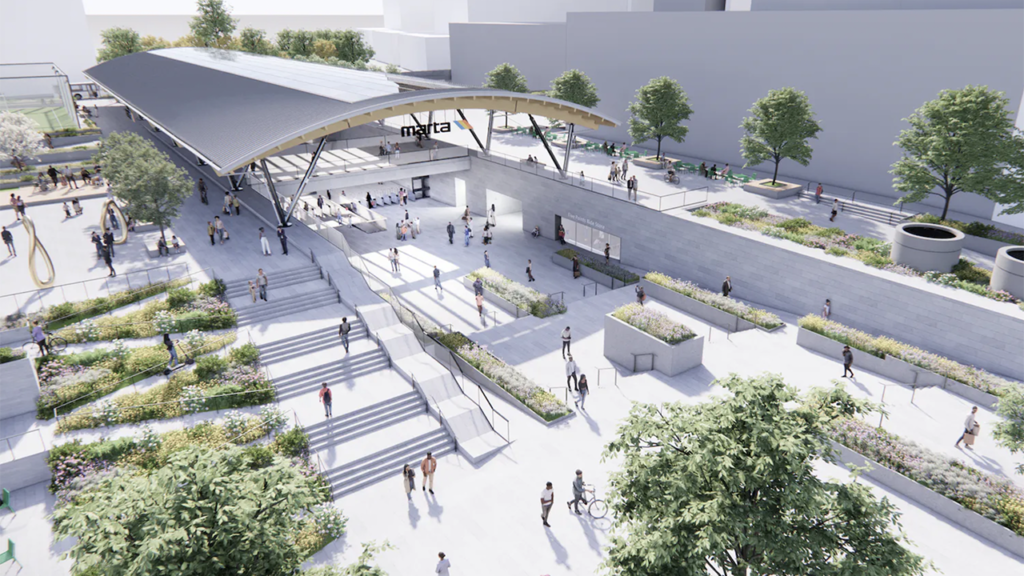
MARTA on Dec. 5 reported advancing its Five Points Station Transformation Project to the public review process under the National Environmental Policy Act (NEPA). The transit agency and its City of Atlanta partners are pursuing station upgrades, including deconstructing the existing concrete canopy and replacing it with a new canopy that allows for more light and ventilation; reconnecting Broad Street to pedestrian traffic; and incorporating community activities, public art, agriculture, gathering places and other customer amenities.
The $206 million is funded through the More MARTA Atlanta half-penny sales tax, with $13.8 million from the state of Georgia, and a $25 million Federal RAISE Grant, according to the transit agency.
Five Points Station not only is the largest and busiest rail station in the MARTA system, bus also the connecting point for all four rail lines, the North/South (Red and Gold) and East/West Lines (Green and Blue), and nine bus routes.
“The State Historic Preservation Office (SHPO) determined in April that the station is of significant historical importance since it is part of the largest public works project in Atlanta history, the construction of the MARTA system,” the transit agency reported. “As a result, the Federal Transit Administration (FTA) determined the NEPA class of action to be an Environmental Assessment (EA), and MARTA conducted multiple studies over the next several months centered around the project’s impact on the built environment, specifically the concrete canopy.”
MARTA said its design team worked to refine the project concept to address some of the City of Atlanta’s concerns about project cost, which received City concurrence in July.
Because the SHPO determined that the project would have an adverse effect on the historic resource, Five Points Station, the proposed mitigation measures include architectural documentation (in the form of HABS Level 2 photography, written historical descriptive data, and digital reproductions of existing drawings), and interpretive panels memorializing the concourse and plaza levels, according to MARTA.
MARTA said that the project will now undergo a monthlong public review of the Environmental Assessment before the FTA will go through the final approval steps, which are expected to be a finding of no significant impact (FONSI) under NEPA. Upon that final determination, MARTA will begin preparing Five Points Station for construction work.
Skidmore, Owings & Merrill will lead the design of the canopy deconstruction and removal, and Skanska Building USA is the Construction Management at Risk contractor that will oversee the project. While construction will likely not be complete for the World Cup in 2026, MARTA said it “will ensure the rail station is ready to host soccer fans from around the world.”
Phoenix Valley Metro
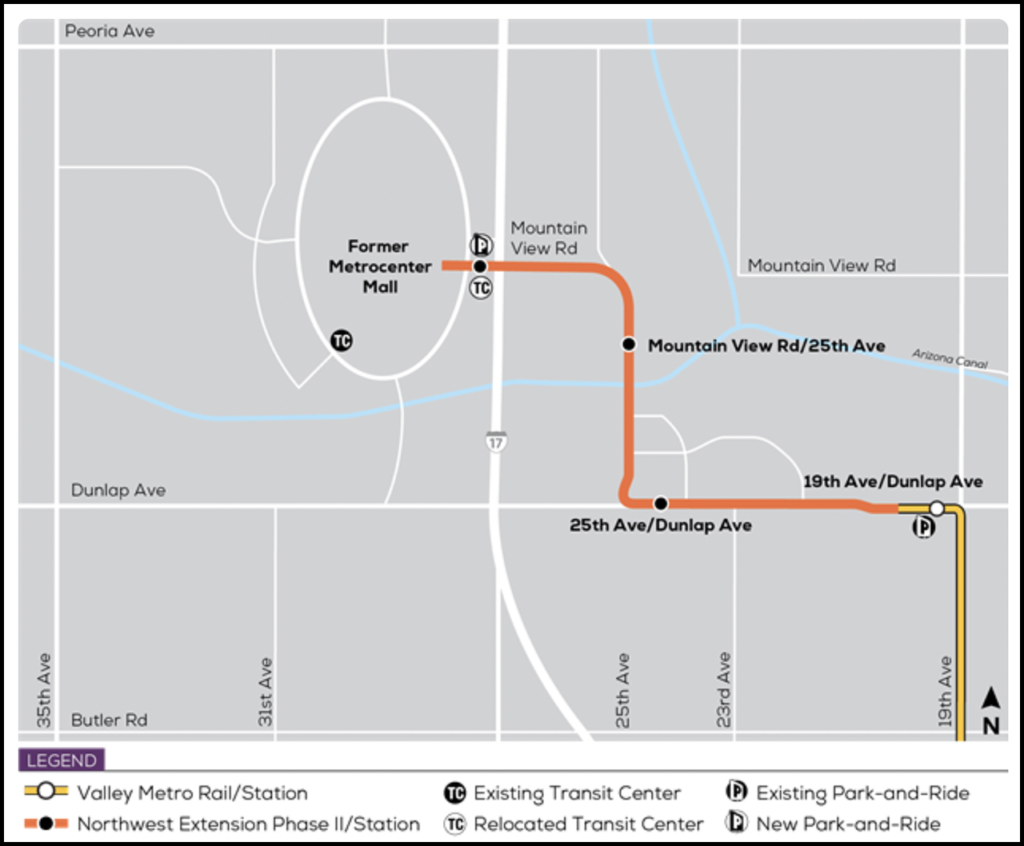
With service expected to launch early next year, Phoenix Valley Metro’s Northwest Extension Phase II project is now in the testing phase, using pallets of water to simulate loaded light rail trains, according to a CBS 5 report. Testing ensures that the tracks, power and communication systems are installed and functioning properly, and also includes operator training and simulated service to test the operating schedule.
The 1.6-mile extension project will help connect the West Valley to destinations in Phoenix, Tempe and Mesa, Ariz. It will extend light rail west on Dunlap Avenue from 19th Avenue, then north on 25th Avenue and across I-17 at Mountain View Road, ending on the west side of the freeway near the former Metrocenter Mall (see map above). It adds three new stations, including the system’s first elevated station across I-17.
In 2004, the Phoenix City Council approved the Northwest Extension, and in 2007, the route was divided into two phases. The 3.2-mile Phase I on 19th Avenue from Montebello to Dunlap Avenue opened March 19, 2016.
SacRT
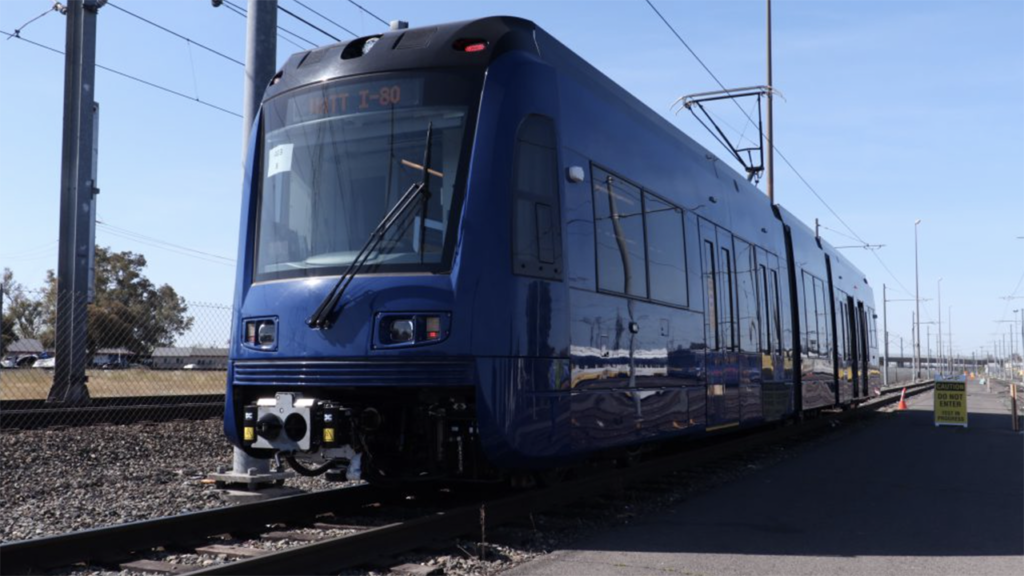
SacRT on Dec. 6 is kicking off burn-in-testing for its new Siemens Mobility S700 light rail vehicles.
Its low-floor light rail trains, comprising a maximum of three S700s, will operate as “active trains,” mimicking actual service during testing, which will be conducted systemwide on the Gold, Green and Blue lines (see map below) and is expected to take approximately two weeks per train. This phase will allow SacRT to identify and address any issues before the trains are approved for service, the agency said. The burn-in testing process is projected to continue through the spring 2024 for the first 20 trains.
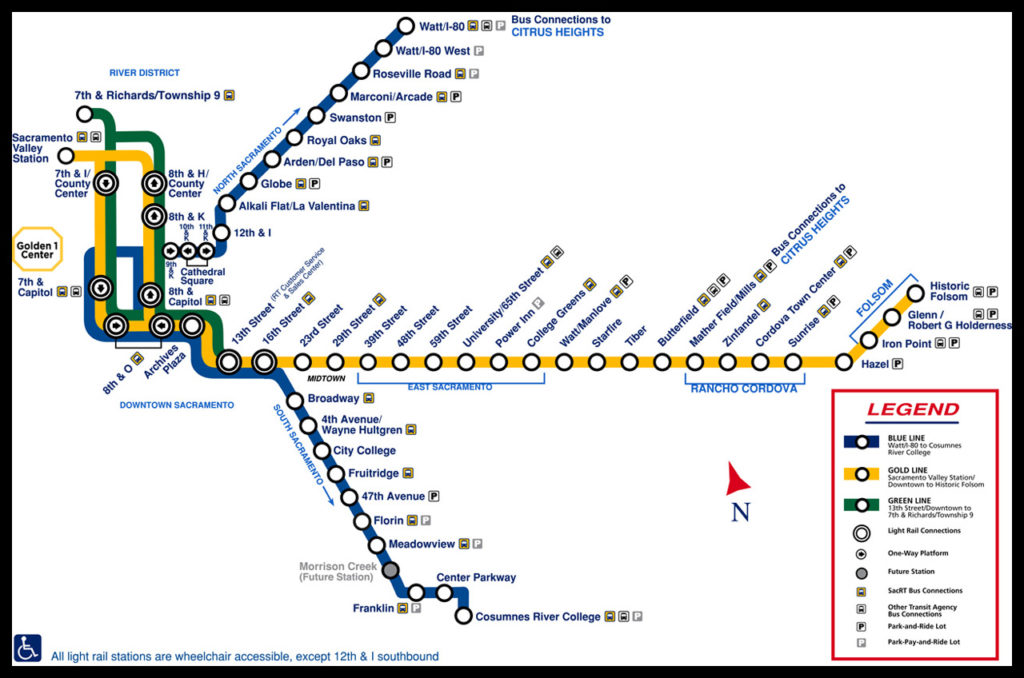
SacRT’s light rail operators are currently undergoing training to both test and operate the new trains.
Siemens Mobility delivered the first new train to SacRT in March 2023. The agency said the first S700s are expected to be ready for revenue service in summer 2024.
SacRT on Nov. 29 reported that its $500 million Light Rail Modernization Project is slated to hit “high gear” in 2024, as it adds service frequency, introduces its new fleet of S700s, and continues platform modifications along the 43-mile, 53-station system.
Tri-Rail
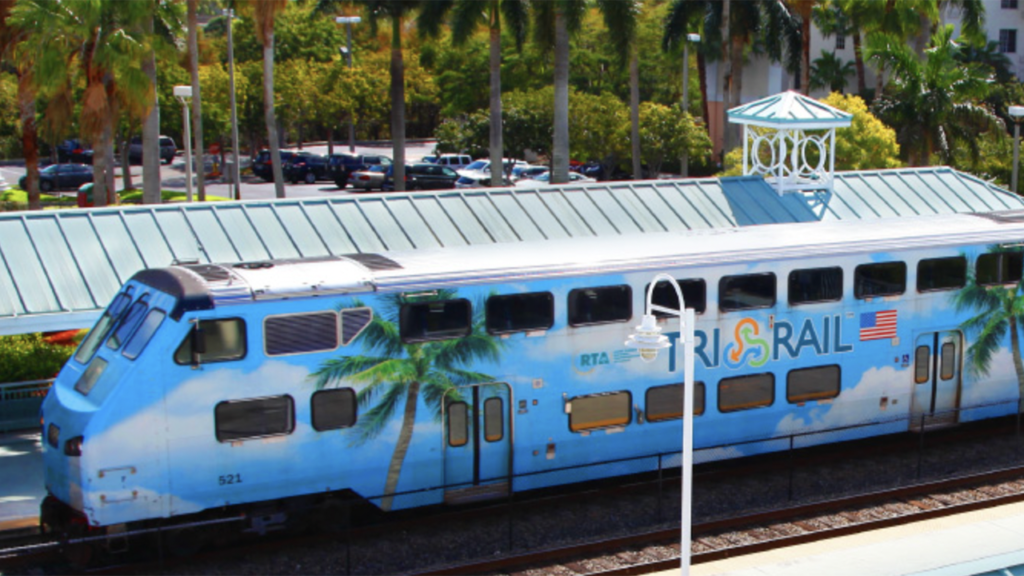
The South Florida Regional Transportation Authority (SFRTA) on Dec. 5 reported that Tri-Rail commuter rail ridership has continued to grow in 2023. It averaged more than 300,000 monthly riders between January and November 2023, up 18% from the same period in 2022, and it is on pace to reach 4 million riders by the end of the year, the agency said. Tri-Rail trains have averaged more than 13,000 weekday and 6,500 weekend riders between September and November 2023.
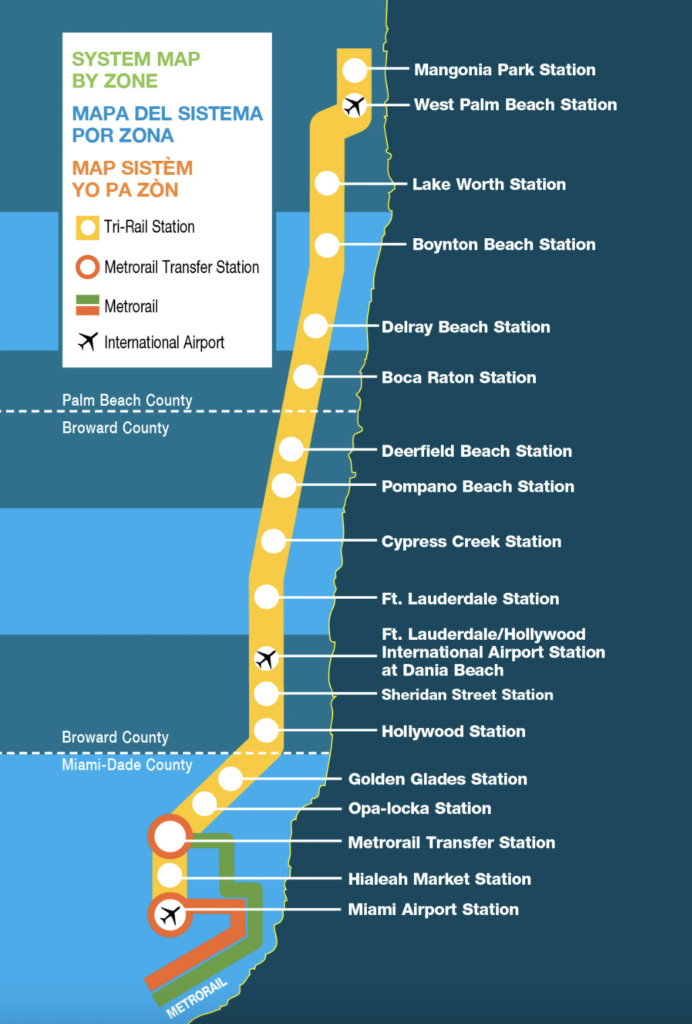
Tri-Rail’s overall ridership has recovered 85% from its pre-COVID 2019 days, when it had its highest ridership year with 4,495,039 passengers; weekend ridership has fully recovered. The system topped 14,000 weekday passengers (92% of pre-COVID ridership) twice in November—a first since 2020, according to SFRTA.
“We continue to see hundreds of bicycles and scooters onboard, plus our luggage racks are constantly full even on weekends,” SFRTA Executive Director David Dech said. “Travel season is a 365-day operation in South Florida and we proudly serve passengers with connections to all three major South Florida airports all year round.”
SFRTA reported focusing its efforts this past year on increasing airport ridership by updating the Fort Lauderdale Airport shuttle service to 15 to 20-minute frequencies, providing an Uber/taxi voucher for Palm Beach International Airport, and developing a marketing campaign for these initiatives.
In a related development, final federal approval could bring Tri-Rail to downtown Miami in December.
TTC
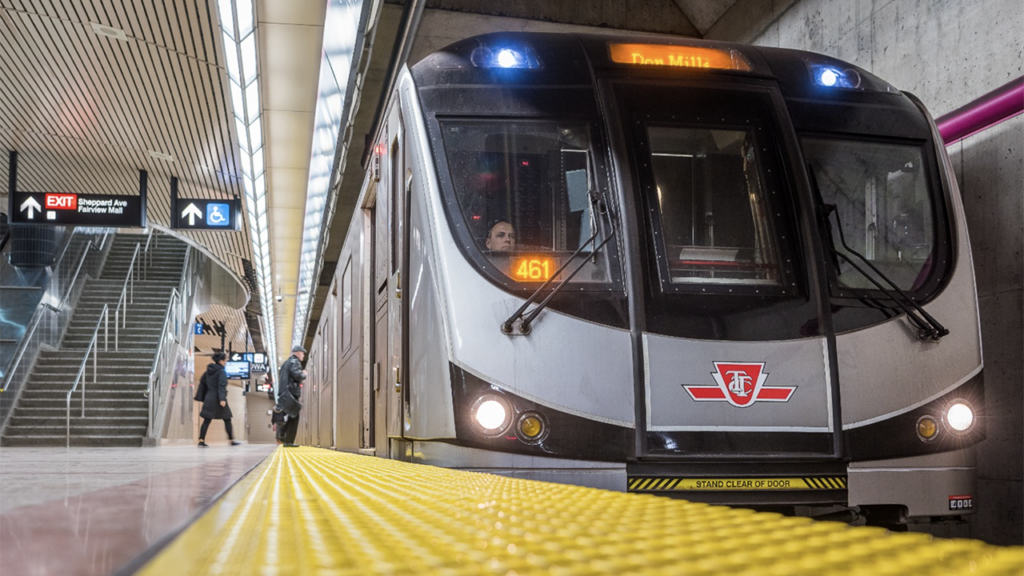
Avari Wireless on Nov. 30 reported that it will supply “engineering, equipment, materials, and other services to construct a Distributed Antenna System (DAS) using digital technologies, to provide radio communications coverage over a TTC underground subway system segment, supporting TTC and Public Safety agencies.”
The current contract, Avari Wireless said, will demonstrate that the supplied pilot system design and equipment “can meet performance and specification requirements in a specific section of the TTC and has the inherent capability to be expanded to support the radio coverage requirements of the entire underground and enclosed areas of the TTC subway system.” TTC subway service runs over 46 miles of track and includes 75 stations (see map below).
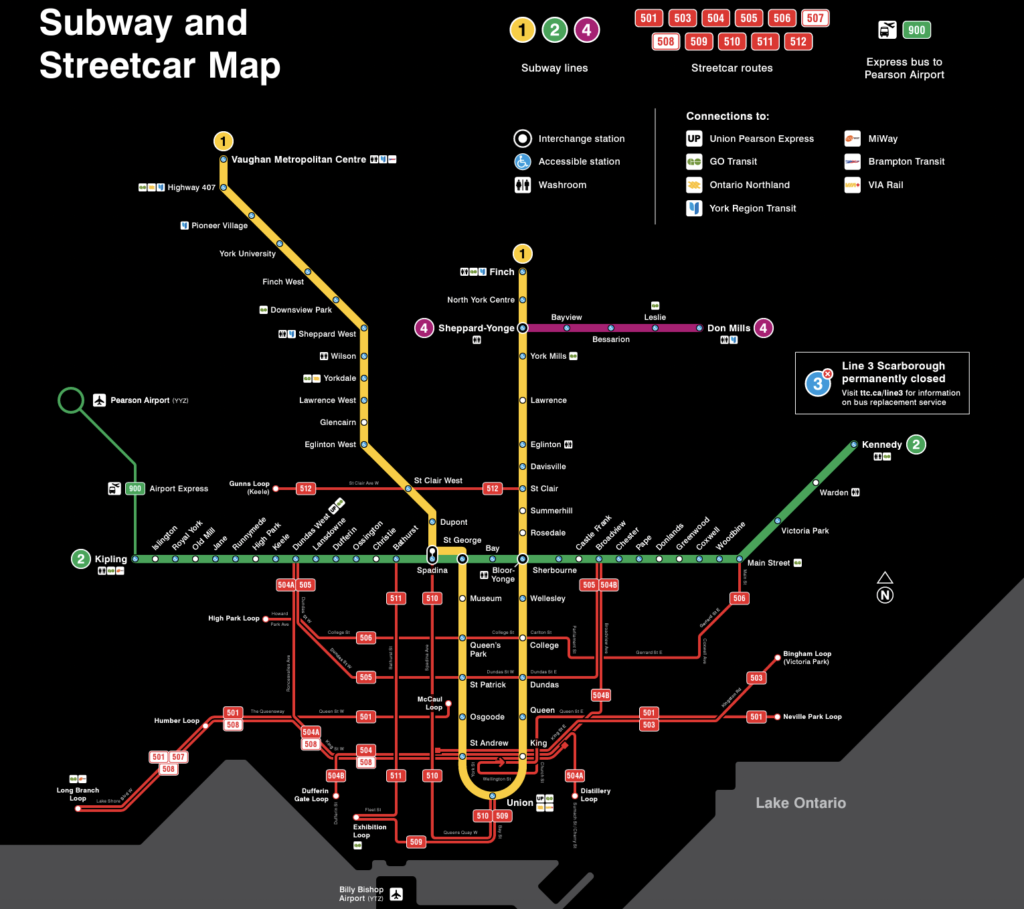
“We are very excited that TTC has selected Avari to proceed with a pilot project for the replacement of old distributed antenna equipment in Line 1, 2 and 4 of the Toronto subway,” Avari Wireless CEO Andrew Leung said.
In other TTC news, Alstom recently delivered the first of 60 additional new low-floor Flexity™ light rail vehicles to the agency.



